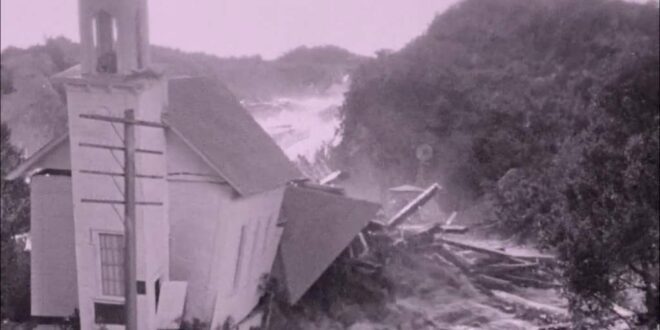In 1925, Bob Jones, the manager of the St. George Hotel in Santa Cruz, connected with film director Irving Cummings through his friend, actor George O’Brien. O’Brien, the son of a prominent San Francisco police chief, had spent his childhood summers in Santa Cruz and later became a successful film star. Cummings had recently joined Fox Studios and signed O’Brien to star in his new movie, “The Johnstown Flood.”
Bob Jones, having covered the Johnstown flood as a reporter for the Chicago Daily News in 1889, believed that the story had dramatic potential, especially since the disaster could have been prevented. Cummings agreed but was concerned about legal issues, as the companies responsible for the disaster had never been brought to justice. To avoid a lawsuit, he decided to adapt a script that placed blame on an unscrupulous logging baron in the story.
The background of the Johnstown flood reveals that Johnstown was a thriving industrial town with a population of 30,000. The town’s steel and iron works played vital roles in supplying arms to the Union Army during the Civil War and providing iron for the Transcontinental Railroad. In 1880, B.F. Ruff and industrialist Henry Clay Frick purchased an abandoned reservoir and dam, creating a country club called the South Fork Fishing and Hunting Club. They transformed the reservoir into a deep lake, ignoring warnings about the dam’s structural shortcomings.
On May 31, 1889, heavy rains caused the lake to fill up rapidly. The dam, weakened by improper repairs and clogged drainage pipes, eventually collapsed. The resulting flood wiped out three small towns before reaching Johnstown, where it caused unprecedented destruction. The floodwaters were a terrifying mix of houses, debris, animals, and human lives. Many people clung to rooftops and flotsam, praying for salvation, while fires caused by cooled metal furnaces added to the chaos. A log jam trapped victims, and an overturned oil tanker set the water ablaze, resulting in more deaths.
After the floodwaters receded, survivors wandered through the horrifying aftermath. Victims were given impromptu justice, and the brick schoolhouse became a morgue, with desks holding the bodies of former students. The death toll reached over 2,200 people.
Cummings was deeply moved by the tragic details of the Johnstown flood and made it his mission to convey the humanity of the ill-fated community. He scouted locations in Southern California but was unable to find what he wanted. Bob Jones showed him his photography of Santa Cruz County, particularly images of local industries like logging. Cummings was impressed by Jones’ artistic camerawork and obtained approval for the project. Jones was credited with securing the film’s production for Santa Cruz.
Cummings, his wife, and a crew of 80 people arrived at the St. George Hotel in Santa Cruz for a two-month stay in October 1925. They worked with cinematographer George Schneiderman to capture rainstorm and cloud effects for the film. The crew received transportation from the Santa Cruz Cab Co., which had to expand its fleet to accommodate their needs. Filming took place in various locations, including Empire Grade, where a cabin, well, and farm were constructed for the film’s Burger family. Other scenes were filmed in downtown Boulder Creek, featuring local landmarks such as the Rex Hotel and the Boulder Creek Fire Department.
The leading actors in the film were Paul Panzer and Janet Gaynor, with Florence Gilbert as the leading lady. Special effects were handled by Jack Smith and Roy Davidson, who meticulously documented buildings and landscapes to create realistic miniatures for destruction scenes.
Bob Jones directed “The Johnstown Flood” with the intention of bringing this tragic story to life on the silver screen.
 Mind Uncharted Explore. Discover. Learn.
Mind Uncharted Explore. Discover. Learn.



